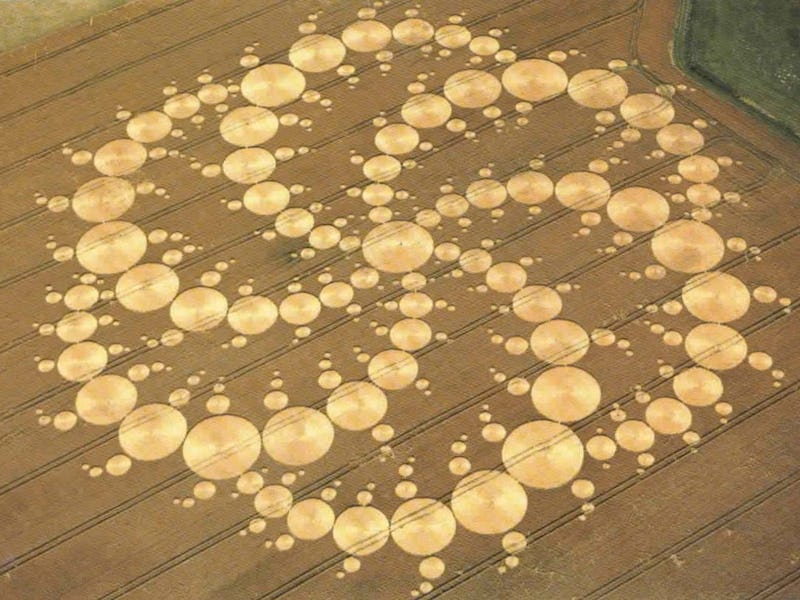Drone Agriculture Is About to Discredit Crop Circle Truthers for Good
We want to believe, but unmanned aerial vehicles are going to make it way harder.

If drone agriculture takes off — and there’s good reason to think it will — we’ll be spending a lot more time looking at farmland from the air. That’s great news for farmers looking to increase the output of their fields or minimize the negative effects of too much fertilizer. That’s bad news for people who want to preserve the mystery of crop circles, mainstays of pop alien mythology which have always been made in pretty much the same way they are currently created — by guys with surveying tape and wooden boards.
Eyes in the Sky
A surprising amount of drone research comes out of the American heartland, and that’s because many of those institutions have deep agricultural roots. Nikolaos Papanikolopoulos, a roboticist at the University of Minnesota, told Inverse in December that a major reason he wants to develop small, solar-powered drones is to give farmers a tool that doesn’t have to come down frequently. From this vantage, farm drones can give you daily updates and resolution at the centimeter scale — fidelity that satellites currently can’t match.
As long as you’ve got the right sensors to collect data and the right algorithms to process the information, you can learn a lot. Proposed drone agriculture techniques include everthing from weed mapping to monitoring the application of glyphosate herbicides. A 2012 review in the journal Precision Agriculture lists disease, water levels, leaf chlorophyll concentration, crop height, plant species, soil quality, pest management, and others as possible data collection targets. There will likely be others that have not been yet put into practice.
Surveillance Agriculture
So what does that mean for would-be extraterrestrial messengers? Simply put, it will be tougher to sneak in and out of cornfields undetected. Though the cover of darkness will still be helpful, drones that monitor crop data don’t necessarily need the same amount of light as human eyeballs. Plus, in areas that are prone to vandalism — or, perhaps for crops, large nocturnal pests — flying monitors are still possible without solar power; the drone company CyPhy Works has proposed drones powered by tethers, for instance, that float in place like sleepless sentinels. We know drones work for spotting human-sized animals, particularly when there’s little tree cover — ecologists can easily spot 5-foot alligators from 300 feet over a marsh.
Martin et al. 2012, "Estimating Distribution of Hidden Objects with Drones: From Tennis Balls to Manatees"
That’s not to say that drones couldn’t help us solve some mysteries of crop circles. The crop circle craze triggered some weird theories at its height — Stephen Hawking believed strange air vortices could have caused the crops to fall, and others thought they were the product of mating hedgehogs — but in 1991 two British men confessed to more than two decades and hundreds of crop circles. Though we know they’re man-made, the vandal/artists behind them have kept mum on just how they’re able to map out such complex symbols.
Cold Circle War
Richard Taylor, a University of Oregon materials scientist, wrote in 2011 that crop circle makers have adopted increasingly sophisticated techniques and technology — such as laser guides — to create intricate fractal shapes during a single night. Taylor cites the hypothesis (though he raises it as speculation more than anything else) that crop circles could be formed using magnetrons taken from microwaves, as the radiation would allow superheated stalks to bend in strange ways.
Catching the creation of a crop circle in the act has been tough for decades — but if there’s one way to clear up any questions that remain, it’s aerial surveillance.